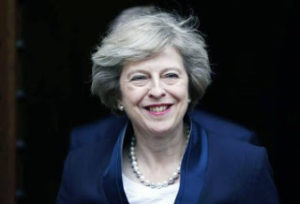 India and the UK are expected to sign business deals exceeding GBP 1 billion (Rs 83,00 crore) during the three-day visit of British Prime Minister Theresa May, who is here on her first bilateral visit outside Europe since assuming office in July.
India and the UK are expected to sign business deals exceeding GBP 1 billion (Rs 83,00 crore) during the three-day visit of British Prime Minister Theresa May, who is here on her first bilateral visit outside Europe since assuming office in July.
Describing her talks with Prime Minister Narendra Modi as good and productive, May said as leaders, they both were working to improve the livelihoods of their citizens creating jobs, developing skills, investing in infrastructure and supporting technologies of the future.Talking about Modi’s vision of smart cities, May said they have agreed on a new partnership that will bring together government, investors and experts to work together on urban development, unlocking opportunities worth GBP 2 billion for British businesses over the next five years.
This will focus on the dynamic state of Madhya Pradesh with plans for more smart cities than anywhere else and the historic city of Varanasi.
Four rupee-denominated bonds worth a total of 600 million pounds ($748 million) are expected to be listed in London in the next three months, Theresa May said.
The latest four bonds will provide financing to expand India’s highway and rail networks and meet its plans to boost energy efficiency and renewable energy, the government said.
They will be issued by Indian government-backed corporates Indian Railway Finance Corporation, Indian Renewable Energy Development Agency, Energy Efficiency Services Limited, and National Highways Authority of India by the end of January 2017. May said since July, more than 900 million pounds rupee-denominated bonds have been issued in London, equivalent of more than 70 percent of the global offshore market.
“This government will continue to work closely with both India and our financial services sector to ensure our growing rupee bond market continues to help finance India’s ambitious infrastructure investment plans,” May said in a statement. These rupee-denominated or masala bonds as they are called, unveiled in 2015, are an opportunity for Indian firms to raise money, while giving international investors access to higher yields in a zero-yield world.
They are also a way to borrow overseas, they are also an attempt to make the tightly-controlled rupee more widely available in global markets, similar to the way in which China has moved to sell more yuan debt to overseas investors. Alongside this, the UK has agreed to invest GBP 120 million in a joint fund that will leverage private sector investment from the City of London to finance Indian infrastructure.





